Effective Formal Warning Letter Template
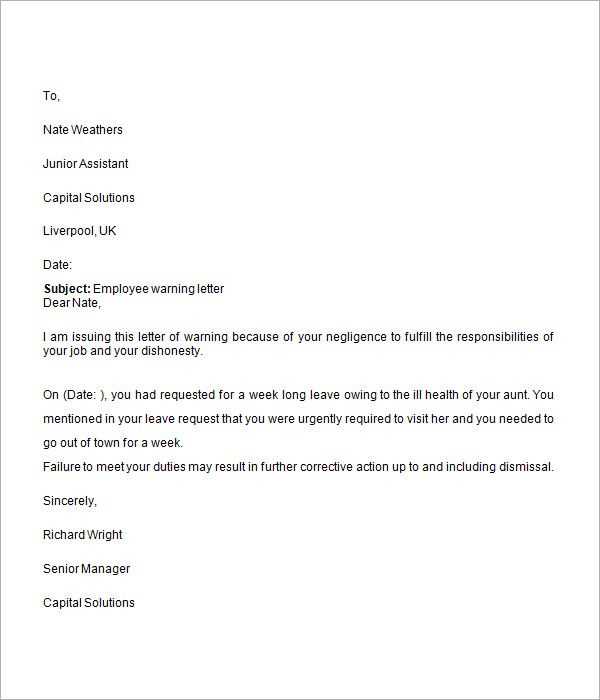
When addressing workplace misconduct or performance issues, it is essential to communicate concerns clearly and professionally. A well-crafted document helps ensure that both parties understand the expectations and consequences moving forward. This type of written communication serves as an official record and a tool for improvement.
Key Elements to Include
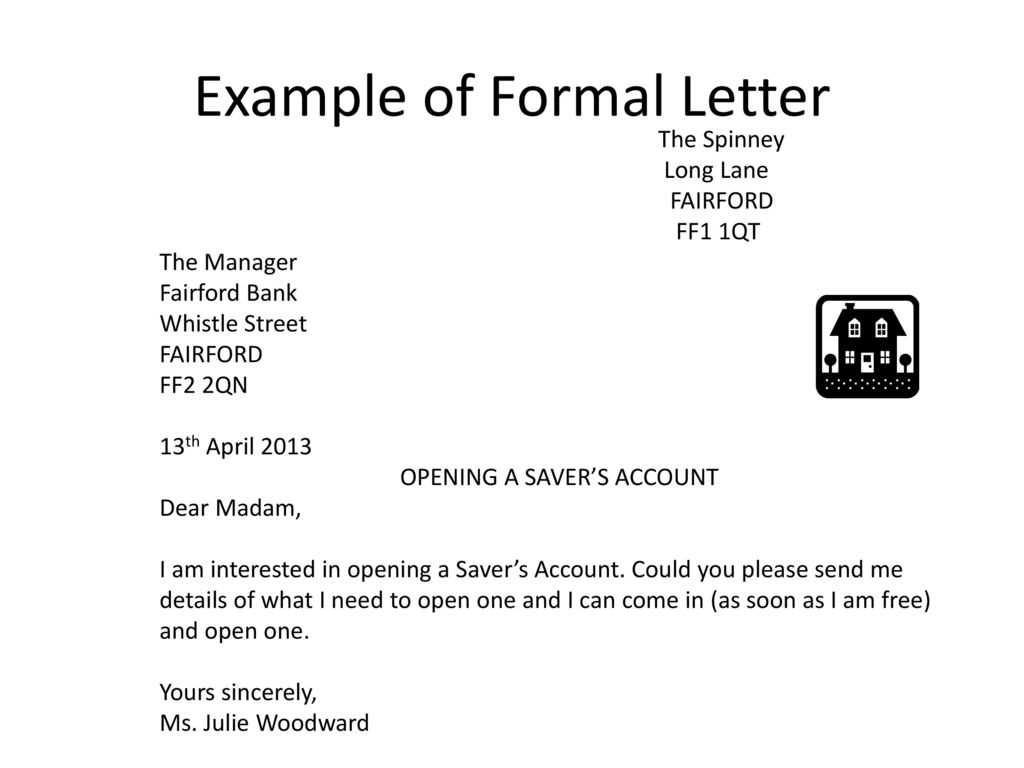
Effective communication requires including specific details. A comprehensive approach highlights the issue, provides context, and outlines expected changes. Make sure to cover the following points:
- Employee’s actions or performance issue: Clearly state what behavior or actions need correction.
- Previous discussions or warnings: Reference any prior attempts to address the issue, if applicable.
- Expected improvements: Describe what changes are needed and the timeline for improvement.
- Consequences: Detail the next steps if the issue persists or the expectations are not met.
Crafting the Message
When drafting, focus on maintaining a tone that is direct yet respectful. Use clear language to avoid any confusion. Avoid unnecessary emotional language, as the goal is to guide improvement without causing further tension.
Delivering the Document
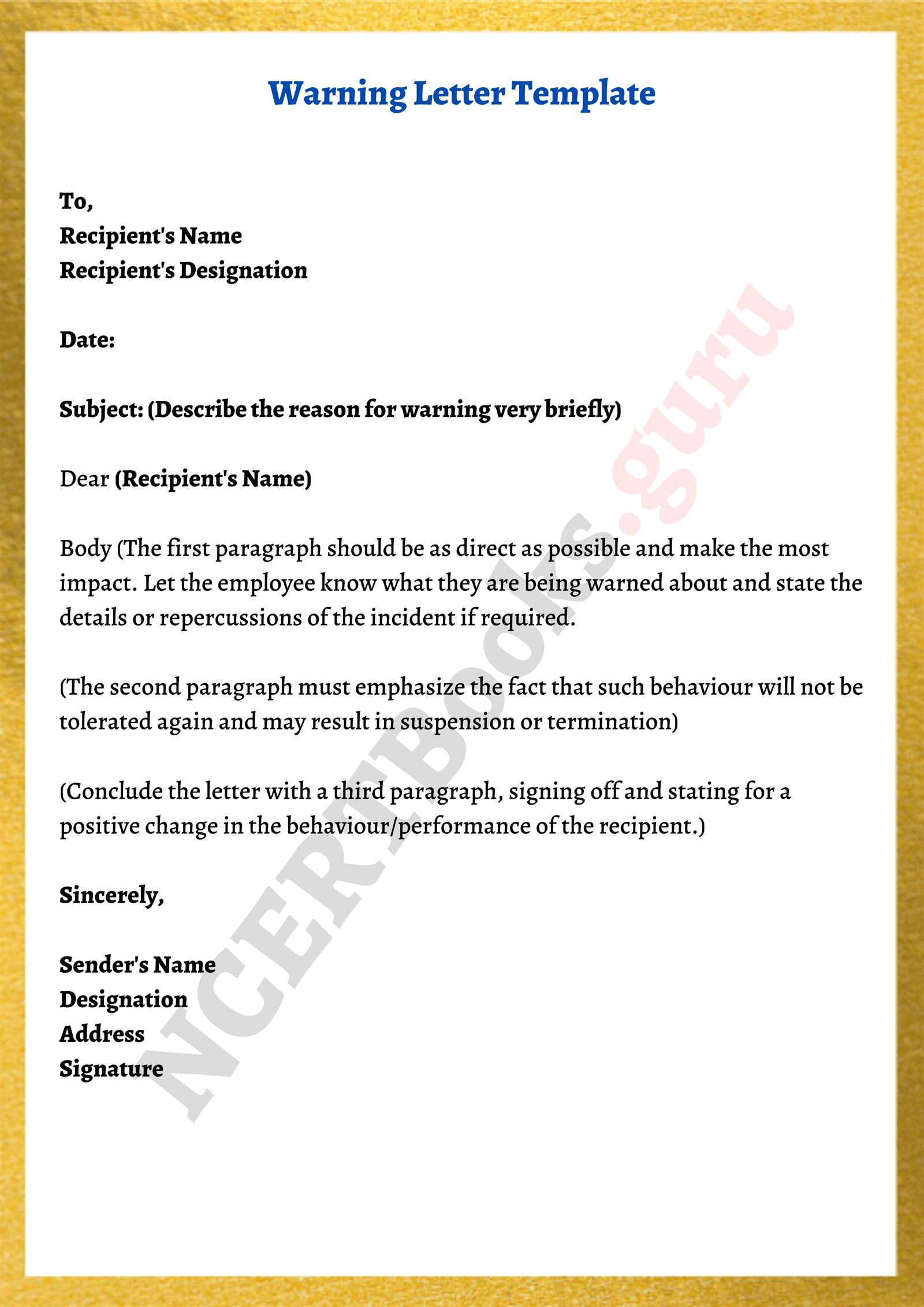
Once completed, consider the best method for sharing this document with the employee. It should be done in a private setting to allow for a constructive conversation. After delivery, ensure that both parties understand the expectations and are on the same page.
Ensuring Compliance and Follow-up
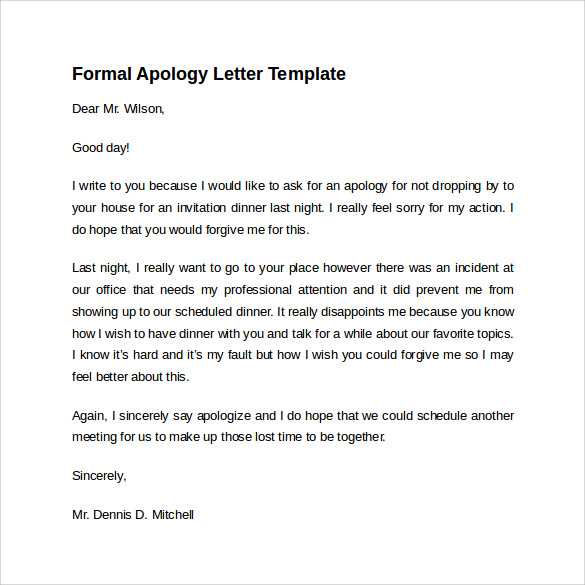
After the document is delivered, consistent follow-up is key. Make sure to monitor the employee’s progress and provide feedback. If necessary, schedule a follow-up meeting to discuss any improvements or continued issues.
Why Address Employee Issues Through Official Communication
In a professional environment, it is important to address behavioral or performance-related concerns in a way that is clear, structured, and actionable. Official written communication serves as a tool for ensuring that expectations are clearly outlined and potential consequences are understood. This type of document is essential for maintaining a productive and respectful workplace while also providing a documented record for both parties.
Key Elements to Include
A comprehensive document should contain the following essential components:
- Issue Description: Clearly identify the specific behavior or performance that needs to be addressed.
- Previous Attempts: Mention any prior informal or formal discussions regarding the same issue.
- Expected Changes: Outline what improvements are expected from the employee.
- Consequences of Inaction: Detail the potential next steps or outcomes if the issue is not resolved.
Steps to Create an Effective Document
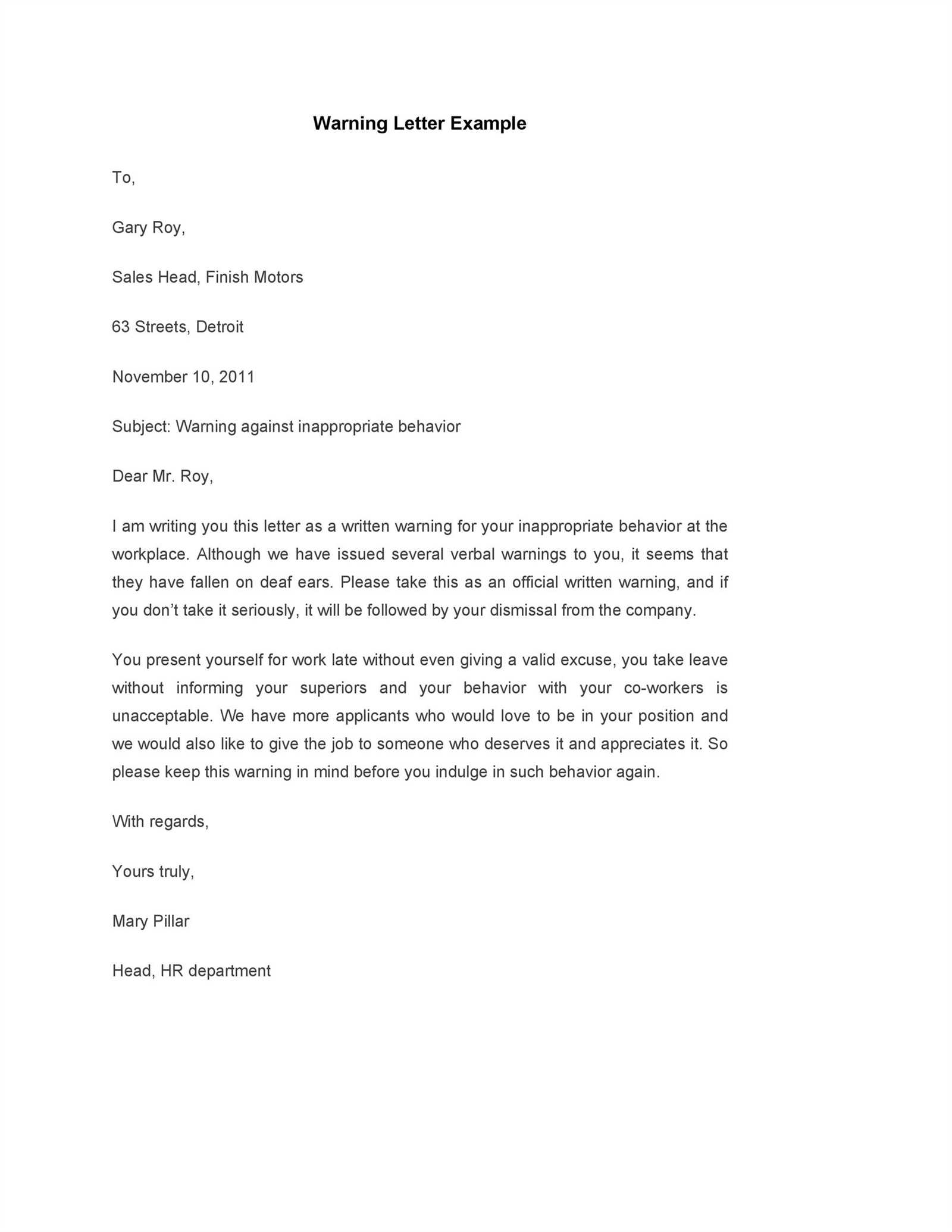
Begin by focusing on the facts and avoid emotional language. Keep the message concise and professional. A step-by-step approach includes outlining the issue, stating the expected changes, and providing a clear timeline for improvement. Conclude with a polite reminder of the importance of adhering to workplace standards and the available support if necessary.
Additionally, be mindful of legal factors that may arise from such communication. Ensure that the content aligns with company policies and labor laws to avoid any misunderstandings or potential disputes.